Children of Conflict
Aug 19, 2024
The purpose of this article is to summarize observations of individuals raised in an informational environment shaped by conflicting types (TIMs - Type of Informational Metabolism).
1. Features of the informational structure formed by conflicting TIMs.
No matter what is written about the difficulties in relationships between conflicting types, or the problems and challenges of such unions, life shows examples of marriages (even long-lasting ones) between representatives of conflicting TIMs. Not to mention, people often have to find an optimal mode of communication in conflicting relationships that are not of their own choosing: with relatives, neighbors, or coworkers. As observations show, this optimal mode of communication is characterized by a specific structure of the informational environment, which is formed by partners interacting with each other. So, what does this informational environment look like?
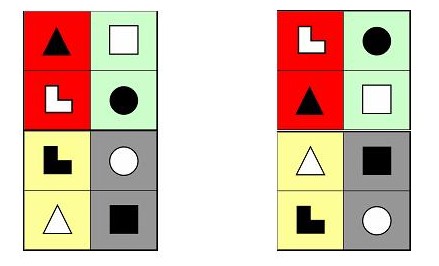
Aspects that correspond to the base function of one partner and the vulnerable function of the other create a conflict zone in the truest sense of the word. The themes of the base aspect of one partner are painful for the perception of the vulnerable function of the other partner, often perceived inadequately, causing misunderstanding, resentment, resistance, and aggression. Thus, the couple develops a particular attitude toward the semantics of these aspects: information is preemptively perceived as potentially dangerous, creating a negative context in their relationship.
The aspects of the creative functions form a zone of constructive dialogue. Information comes from one partner’s creative function to the other’s role function, which values this support and uses it as a model for imitation. It has been observed that partners respect and appreciate each other specifically for their expressions through their creative functions. And perhaps this informational connection could become a "lifeline" for such a couple if the semantics of the creative function weren't tied to the semantics of the base function.
The aspects of the limiting functions mutually affect the reference functions of the partners. Information is perceived as a directive and becomes a tool for managing the partner. This tool is often used in conflicting pairs because it's easier to limit the partner than to reach an agreement.
The aspects of the background functions affect the suggestive functions of the partners and form a survival zone and a so-called hidden conflict. The background function implements its survival programs, keeping the partner’s suggestive function within the "necessary and sufficient" range. On the one hand, the partner silently accepts the position of the other’s background function from their suggestive function but loses the "childlike joy of life."
2. The impact of the informational structure on the development of a child’s IM. "Block Deactivation."
Thus, the filling of a child’s Model A, who is raised by a conflicting couple, occurs under conditions where the base-vulnerable aspects are a conflict zone, the creative-role aspects are a zone of constructive interaction, the limiting-reference aspects are a zone of mutual control, and the background-suggestive aspects are a survival zone limited by the level of "necessary and sufficient."
The uniqueness of the informational environment formed by a conflicting couple lies in the fact that the aspects in each zone differ in terms of their vertness and nalness and can make up a full horizontal block of Model A. If the conflicters belong to democratic quadras (first and third), then the aspects of each zone fall into the horizontal blocks of Model A of aristocratic quadras (second and fourth), and vice versa.
The child’s psyche initially orients itself to a specific attitude toward the information entering these zones. In this sense, the most unfavorable situation arises if the child’s TIM belongs to a quadra that is the opposite of the parents’ quadra by the aristocracy-democracy criterion. In such cases, the attitude toward information shapes specific psychological reactions and behaviors in the areas governed by the horizontal blocks of Model A into which this information falls.
Obviously, the most negative impact occurs on the block that receives the aspects of the conflict zone. This block falls into an area of informational neglect, and a whole area of the psyche structure related to either self-identification (Ego), social adaptation (Super-Ego), partnership (Super-Id), or survival programs (Id) is at risk of distortion.
As the child’s psyche matures, they develop the experience that certain information is conflict-prone, that specific topics are best avoided, and that people who carry such information are unpleasant and should be avoided, as well as the information itself. The person refuses to accept information on specific aspects. This phenomenon can be called "block deactivation."
Particular importance for the child is acquired by the aspects of the constructive dialogue zone and the block of their Model A into which they fall. During the formation of the child’s psyche, this information represents the zone of reconciliation between the parents, and the functions of the corresponding block of the child’s Model A receive support and constructive content.
The aspects of the control zone create an imbalance in the block of the child’s Model A that they fill. The child develops an ambivalent attitude toward the information of these aspects. On the one hand, it’s a tool for controlling others, but on the other hand, it’s a tool by which others can control you.
The aspects of the survival zone reduce the subjective value of the corresponding information and, therefore, the value of the issues in the block of Model A that they fill. The level of "necessary and sufficient" is transferred to the block, and there is no drive for realization or receiving constructive support on the issues of the block.
3. Examples of IM distortions.
3.1.
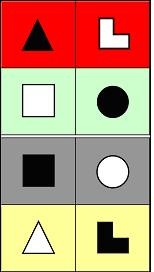
Ego - conflict zone (base - vulnerable)
Super-Ego - constructive dialogue zone (creative - role)
Super-Id - survival zone (background - suggestive)
Id - control zone (limiting - reference).
A self-denial effect arises. The person becomes a source of conflict for themselves. Resistance to their own essence, disagreement with their inner self.
Issues of partnership fall into the survival zone. From a young age, the child gets used to the fact that support in the Super-Id block will be limited, as this information holds no value for those around them. This means that they must learn to solve their problems independently. Self-sufficiency.
Social adaptation issues are supported by the parents’ creative functions, while the Id is activated by the limiting functions.
We get a person focused on achieving in society from the position of a demanding parent (Id). This distortion is almost always accompanied by TIM inversion or a "Super-Ego mask."
Relations with identical and mirror TIMs become complicated.
Example.
Parents are LIE (ENTj) and SEI (ISFp), son is SLI (ISTp), 29 years old.
SLI constantly emphasizes his status (head of a department), is proud of his ability to maintain order in the department and put any employee in their place. At the same time, he positions himself as a cheerful and active person. He hates laziness and laxity in others and eradicates these qualities in himself with particular intensity. He is in a civil marriage with a girl who is a EIE (ENFj).
He appears nervous, restless. He is dependent on the opinions of others, initially confronts in dialogue, but then agrees to the proposed compromise.
3.2.
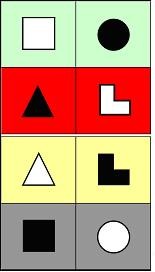
Ego - constructive dialogue zone (creative)
Super-Ego - conflict zone (base)
Super-Id - control zone (limiting)
Id - survival zone (background)
This person ignores social adaptation issues in their life, doesn’t consider it necessary to engage with society. An antisocial type.
The Super-Id, filled with the parents’ limiting functions, leaves the feeling that partners will constantly correct you, so there’s no hope for emotional closeness.
The Id is calm and in harmony with the parents’ background functions.
The Ego, filled with creative functions, prevails over all other blocks in importance.
This person is a loner, arrogantly disposed toward society and partners.
Conflict and Super-Ego relationships become complicated.
Example.
Parents are LSI (ISTj) and IEE (ENFp), daughter is SEE (ESFp), 34 years old.
She categorically refused higher education (a significant fact for this particular example: any education involves a fair amount of structural logic, which in this case falls into the conflict zone of the parental pair). She cannot find a permanent job, partly due to ignoring social adaptation issues, and partly due to the same structural logic, which determines an employee’s place in the organizational structure. She has no close friends; her circle of acquaintances is constantly changing because few can tolerate her arrogance and level of self-importance. She is not married and is not in a close relationship with anyone.
She appears confident and aloof. She rarely considers the opinions of others and abruptly cuts off those who disagree with her.
3.3.
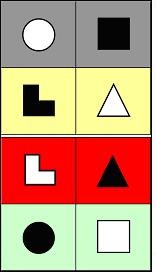
Ego - survival zone (background)
Super-Ego - control zone (limiting)
Super-Id - conflict zone (base)
Id - constructive dialogue zone (creative)
The most severe deformation.
A deactivated Super-Id creates a distrustful, closed, suspicious personality. Duals and activators become carriers of dangerous information for the person.
An agitated Super-Ego, influenced by limiting functions, forms an ambivalent attitude toward social adaptation issues, the parents’ background functions lower the value of active expressions of the person’s Ego, while the creative functions support the Id in working mode.
This person is almost always inverted, critical, and controlling. Dualization is extremely difficult with this type of deformation.
Dual and activation relationships become complicated.
Example.
Parents are ILE (ENTp) and ESI (ISFj), son is SLI (ISTp), 36 years old.
He lives a secluded life, with almost no friends. For close relationships, he chooses girls whose mental ring in Model A has the same set of aspects as his own Model A. This makes it easier to control the person. He has been married twice: his first wife was SEI (ISFp), and the second was EIE (ENFj). There are some oddities in his Ego expressions: he prefers good, high-quality clothes and "properly" prepared food, but still doesn’t consider it necessary to furnish his apartment, with the quality of the setting at the "necessary and sufficient" level. Both at work and in his personal life, he prefers to control and criticize. He is known for his sharp, skeptical mind and unique ability to shift responsibility to others.
He appears calm and respectable but loves to argue and criticize the opinions of others. He is sarcastic. He is critical and demanding of those around him.
3.4.
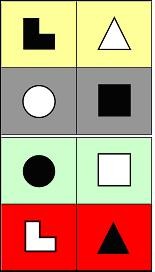
Ego - control zone (limiting)
Super-Ego - survival zone (background)
Super-Id - constructive dialogue zone (creative)
Id - conflict zone (base)
A deactivated Id deprives a person of social immunity, protection, and subconscious regulation of what is happening. The person doesn’t take steps to protect themselves.
The parents’ limiting functions create an imbalance in issues of self-identification and self-realization (Ego); the person becomes accustomed to the fact that in this informational zone, the parents correct each other, which instills insecurity and fear of judgment in their own Ego expressions.
The parents’ background functions lower the importance of social adaptation issues, while the creative functions, on the contrary, increase the importance of partnership.
This person prefers to completely trust their partner with themselves and their fate.
Quasi-identity and complete opposite relationships become complicated.
Example.
Parents are LSE (ESTj) and IEI (INFp), daughter is LII (INTj), 42 years old.
The woman works in a design bureau, engaged in the most complex calculations of fundamentally new nodes and structures. The management loads her with work (because they are satisfied with the results) but refuses to increase her salary or promote her. She fully accepts this state of affairs, trying to find "objective" explanations: men generally perceive women as less intelligent and less promising, and therefore do not consider it necessary to support and promote them, so it is pointless to expect anything different.
In the family, her husband is the absolute and unquestioned head. She agrees with all his decisions. She generally takes a self-sacrificing position towards her loved ones and often goes out of her way to meet their requests at the expense of her own interests.
She appears very insecure, self-sacrificing, and subdued. She is afraid to express her opinion and assert her position.
4. Conclusions and recommendations.
It is evident that in this case, socionics can diagnose the root cause of psychological distortion. Not every case of pathological self-sacrifice or distrust can be explained by block deactivation, but every block deactivation will cause psychological deviations. Diagnosing the cause is essential for selecting the most effective method of psychotherapy.
As a preventive measure against such negative influences on a child’s psyche during its development, it is necessary to change the structure of the informational environment, involving representatives of other TIMs in upbringing or altering the structure in some other way.
An example of the positive influence of changing the informational environment of a conflicting couple on the psychological development of a child can be given as follows:
Parents are EII (INFj) and SLE (ESTp), children are LIE (ENTj) and IEI (INFp).
The father EII (INFj) noticed growing psychological problems in his eleven-year-old son LIE (ENTj): nervousness, crying over any little thing, introversion, lack of communication, and declining academic performance. The father took full responsibility for raising the child, focusing all attention on him and excluding the mother SLE (ESTp) from this interaction (she was instead directed to focus on their older son IEI (INFp)). Thus, the child was effectively removed from the conflicting couple’s informational environment. It took a year of this mode of interaction for the child’s psyche to normalize: self-esteem improved, confidence returned, academic performance increased, and he gained a circle of friends who respected him.
The impact of the informational environment on the formation of a child’s psyche is a separate issue that has received little coverage in socionics literature until now. This article demonstrates that the analytical tools of socionics can address issues related to both the practical diagnosis of the causes of various psychological problems and the modeling of many other types of psycho-informational situations.
Finally, this article can provide food for thought for those familiar with socionics but who do not give due attention to the significance of intertype relations, believing that personal factors are paramount for creating a family: "the most important thing is that the person is good." Without a doubt, it is possible to build a relationship with any TIM, but it’s important to remember that in choosing a partner, we are also choosing the informational environment that will influence the formation of the future child’s psyche. And this is a different level of responsibility.